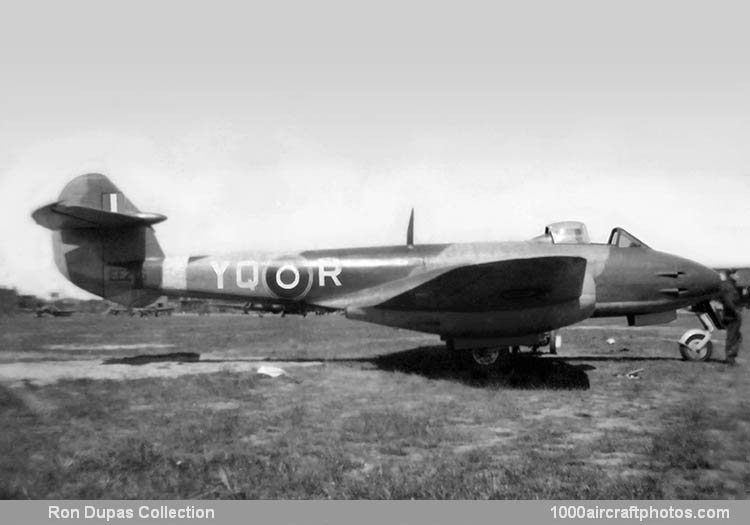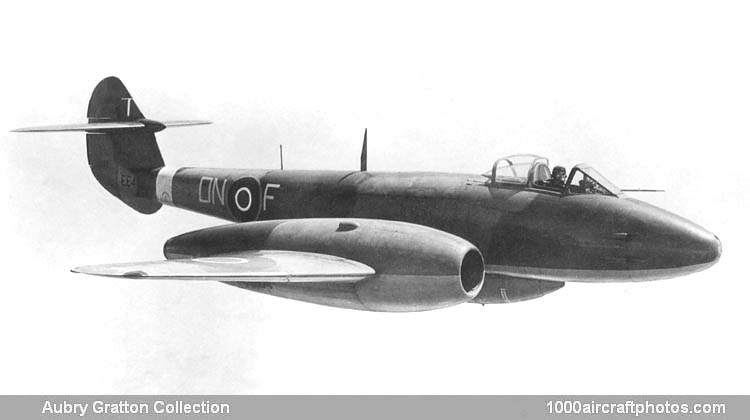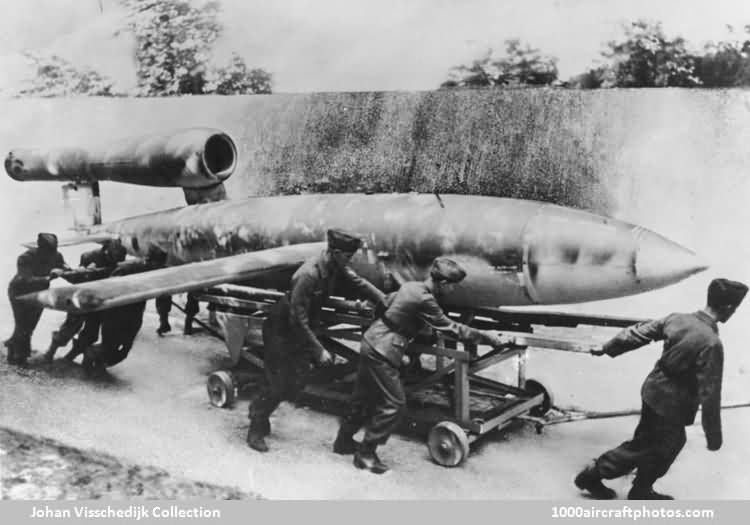06/30/2014. Remarks by
Johan Visschedijk: "Developed in accordance with the requirements of Specification F.9/40 as Britain's first jet-powered fighter, the first prototype Meteor to fly (actually the fifth prototype airframe) took to the air on March 5, 1943. It was powered by de Havilland H.1 turbojets rather than the Whittle W.2Bs intended, the first airframe flying with Rover-built W.2B/23 engines on July 24, 1943. These were two of a total of eight prototypes.
A pre-series of twenty aircraft powered by Rolls-Royce Welland (W.2B/23C) turbojets of 1,700 lb (771 kg) thrust was delivered as Meteor F.Mk.Is. Carrying an armament of four 0.787 in (20 mm) British Hispano cannon, the first of these flying on January 12, 1944. Only one RAF squadron, No. 616, was equipped with this type, receiving the first (s/n EE219) on July 12, 1944 and the last by the end of August 1944.
Gloster G.41C Meteor F.Mk.III (EE484)
(Aubry Gratton Collection) APS No. 4325
The Meteor F.Mk.II was a proposed version with de Havilland H.1 Goblin engines which was not proceeded with, and the Meteor F.Mk.III was the first major production model.
Fieseler Fi 103 V-1 (
Johan Visschedijk Collection)
RAF No. 616 (South Yorkshire) Squadron moved to Culmhead, Somerset in May 1944, and two months later started to work-up on the Gloster Meteor, which coincided with the arrival of the V-1 flying bombs (code-named
"Diver") over London. As the use of the Meteor was seen as an effective countermeasure, the squadron moved to Manston, Kent on July 21.
The aircraft pictured on top of the page (coded
"YQ-R"), and its pilot, Flying Officer T.D. 'Dixie' Dean, both attached to No. 616 Squadron, had the distinction of scoring the first confirmed victory by a British jet fighter. On August 4, 1944 a V-1 was intercepted, as the guns failed to fire, the pilot used the Meteor wing tip to tip-over the V-1, which subsequently crashed near Tonbridge, Kent."


